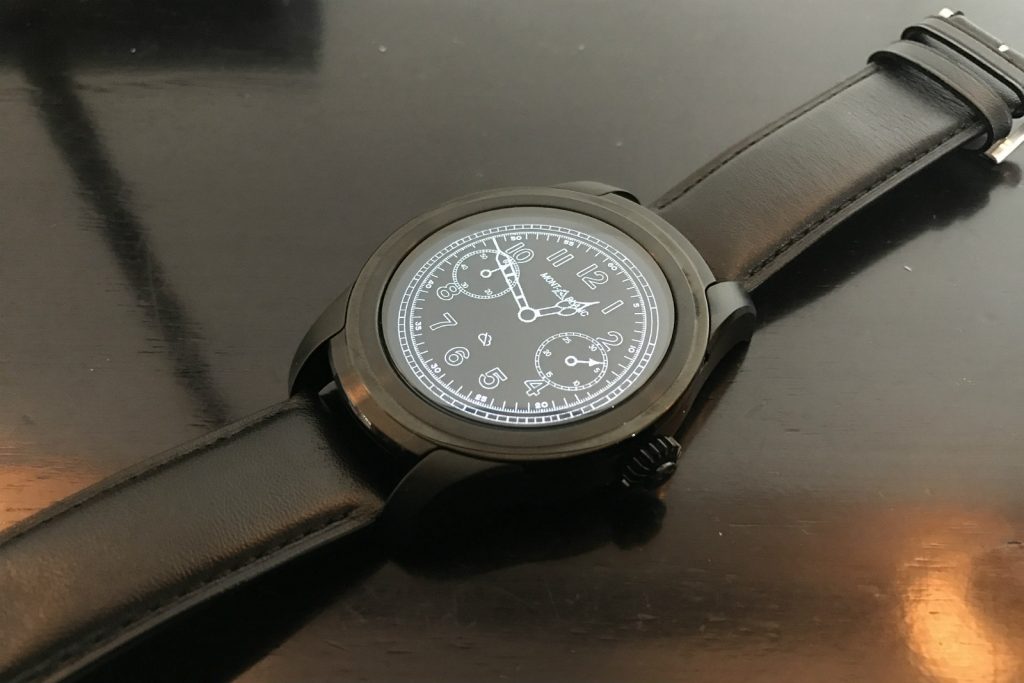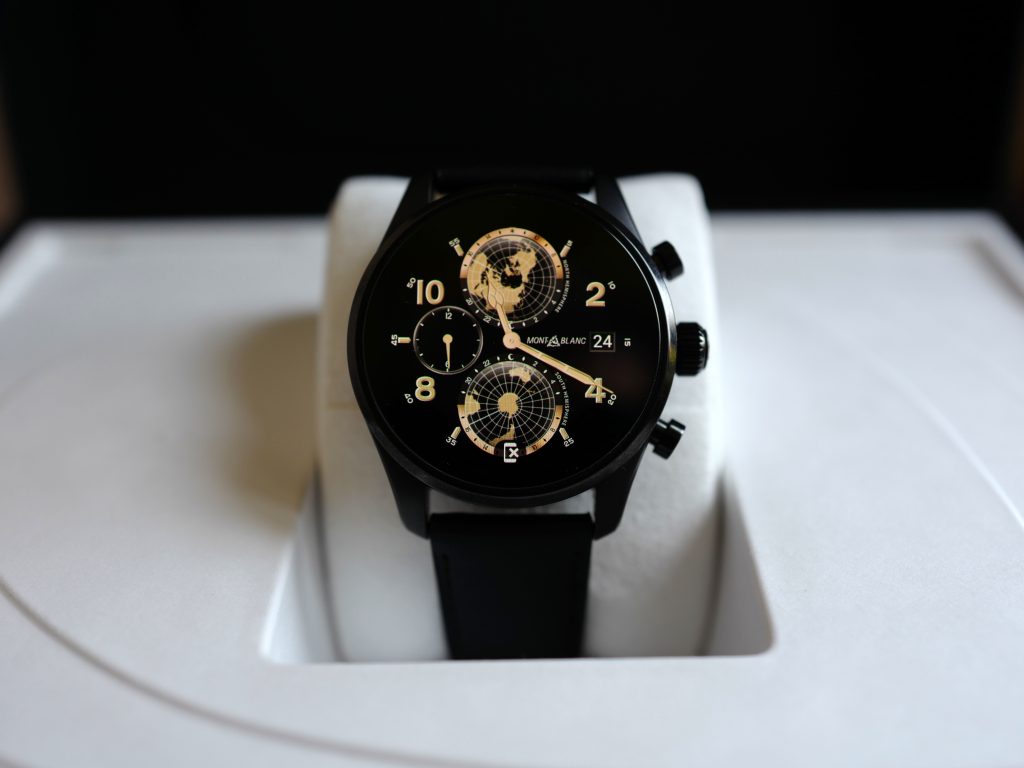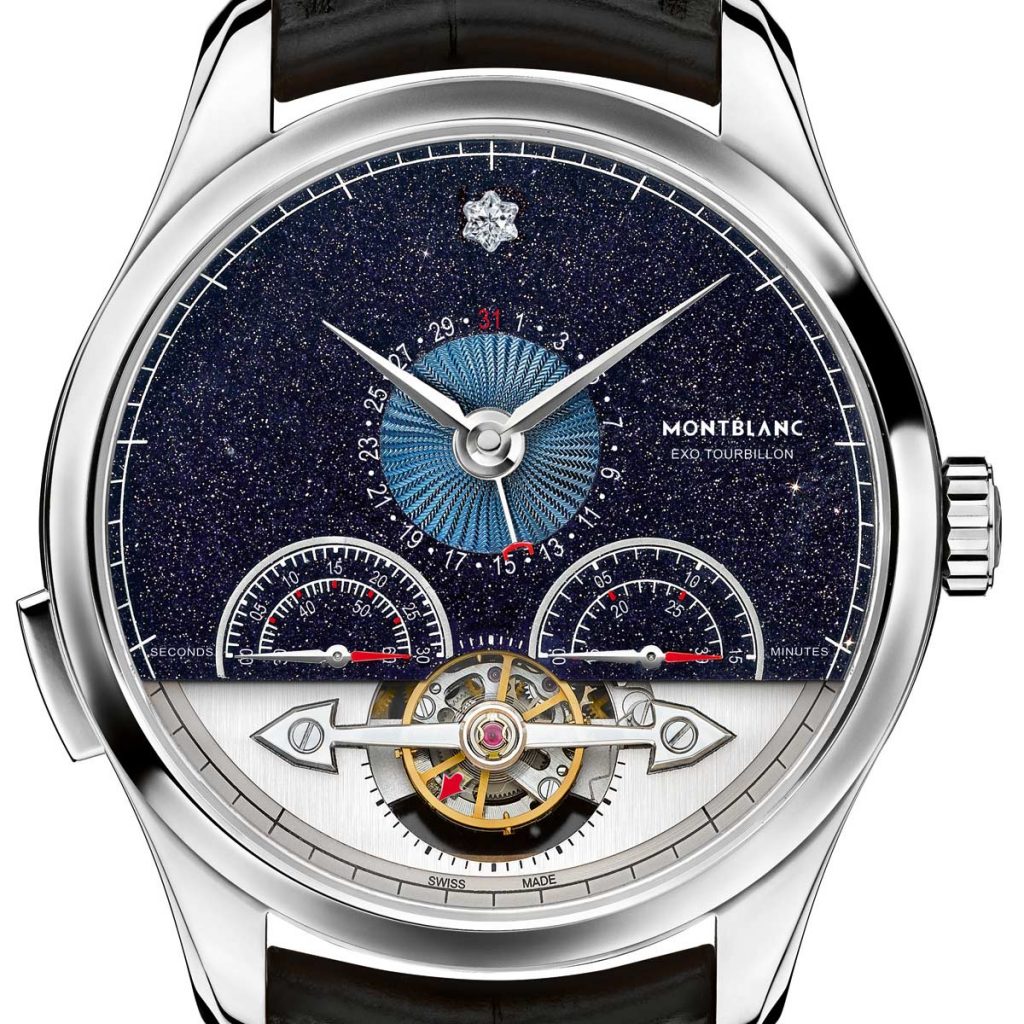Montblanc’s Google-Powered Summit Smartwatch
Android Wear 2.0 custom designed inside the luxury brand’s 1858 collection case

The wearable technology boom began with many pieces foregoing traditional watch design aesthetics. Since, however, Samsung and Apple (and many more tech companies) have adopted attributes belonging to horological language, hoping to lure in the traditional watch wearer. And yet, one can easily differentiate these attempts from the centuries of wristwatch development. Yesterday, Montblanc announced their foray down a different route. Within cases referencing their 1858 Collection they’ve developed the Summit Smartwatch. From the aforementioned cases (in stainless steel, PVD-coated steel, and titanium) to genuine leather and domed sapphire crystal, the exterior components of luxury Swiss watchmaking are present. Inside, however, one finds Android Wear 2.0, a digital face designed by Montblanc, and a crop of unexpected features (like real time voice to text language translation). It’s big (at 46mm in diameter) but that’s to accommodate everything Montblanc put inside.

The features list covers just about everything. There’s the standard activity-tracker and a heart-rate monitor. But there’s also a healthy roster of Android applications available to download straight to the watch (which is compatible with Android 4.3 devices or higher and iOS9 phones or higher)—including Facebook and Twitter, as well as Google Maps with step-by-step guidance. There’s WiFi, Bluetooth, and 4GB of on-board memory. One can reply to messages with an application that allows you to draw a response and have it translated to text. A flight app stores boarding passes. And, for those still using Uber, one can be hailed from the watch with the touch of a button. When running through the phone in demo mode, as we did, it’s impressive just how much is available and how easy it is to access—all with a full day’s battery.
Zaim Kamal, Montblanc’s slim-suited Creative Director who admits to keeping both his sketchbook and iPhone close to his bed, has been hands-on with the development for a year now. “When we started we were looking for a new clientele,” he tells CH, but their motivation was deeper. “We asked, ‘Why has this brand been relevant for 110 years?’ It’s because it was always so in the perception of our clients. That means we always delivered the products they needed for business and culture.” The Summit is targeted at what Kamal refers to as the young progressives, people who are changing the way they work with technology. This led Montblanc to release an e-strap and Augmented Paper thus far. As a next step, the brand sought to connect their traditional watchmaking capabilities with an added variable. “Fine smart-watchmaking,” as Kamal describes.

“It’s a reinterpretation of our classical Montblanc watchmaking and its heritage,” he continues. “By introducing that in a modern way—we aren’t recreating vintage—we are juxtaposing an award-winning case with something future forward in an aesthetically strong expression.” Most notable is the domed sapphire crystal, a staple element among certain luxury watch brands that truly declares a commitment to quality. Here, however, it masks a 400×400 Full Round AMOLED Display—a touch-screen. “It’s the only smartwatch with a curved sapphire crystal,” Kamal notes. “Because it’s touch-screen, we had to find the perfect radius,” he says of the complications. But the result is impressive.

The operating system calls to mind Montblanc colors and fonts. “This is why we went with Google,” he says. “They do not want to give their partner something and say, ‘This is it.’ They wanted us to work with what they gave us and challenge them. This openness of collaboration allowed us to create something inherently Montblanc on a platform that was not ours.” The design was done digitally; Kamal and his team worked with digital programmers, based on a clear idea of what the watch should look like and how it should function. “It was things like resolution of the files, the pixelation of the figures,” Kamal says of the tremendous variation from designing a more tactile piece. “We had a very specific blue in mind. To get that programmed was a challenge. We can reference tones through our system in leather and dials, but how do you take that reference and translate it to digital?” Here, it’s not as simple as a Pantone code.
The crown is the access point, as it would be for a mechanical watch. Pressing it twice activates the menu screen. “We wanted the same kind of action,” he continues. “We wanted the same feeling. It conjures up mechanical interactions.” Where one would see a traditional caseback, there are an array of sensors. These fuel the heart-rate monitor and activity-tracker, keeping close contact with the skin. The leather strap is easily swapped out with a performance-oriented series of colorful nato straps, hewn from rubber. Performance and active use were also taken into consideration for the case material—thus steel and titanium as opposed to gold or Montblanc’s recently released bronze.

“When I was asked what would you like in there, three things came to mind,” Kamal continues regarding functionality. “My frequent flyer information, that was number one. Number two was Uber, because it has been used so much—and you don’t want to stand on the street looking at your phone. And then Google Maps.” All three of these applications run smoothly. But for those who do not want another device bombarding them, all of the features can be silenced and you’re left with a watch. “We are giving you the choices and the possibilities,” he says. It’s much in the same way they approached Augmented Paper, with a real pen and notebook at its core. “It’s all about the wearer wearing the product. It accompanies you. And here, like a traditional watch, it becomes you.”

This is still a watch first and foremost and, despite its size, it’s quite handsome. Kamal says the next generation of consumers needs to know what it’s like to feel the gravity and craftsmanship of a classic watch. Watches have long been an important category within Montblanc, a luxury brand often associated with writing culture. CEO Jérôme Lambert has demonstrated the importance of timekeeping to the brand. “I think that we have integrated the business functions, from travel to access to information. It’s also a very advanced watched. And, of course, the aesthetics. This aligns themselves with the expectations of a Montblanc client,” Lambert says. “We wanted to connect our wearable with our heritage of watchmaking,” Kamal concludes. And they have done so with design and functionality working hand-in-hand.
The Summit Smartwatch will be available on Mr Porter in American and European markets in May, retailing for €890 (around $955)—before expanding globally to Montblanc boutiques and their e-commerce shop. The forthcoming Chinese iteration will not be powered by Android technology.
Lead images by Cool Hunting, last image courtesy of Montblanc












